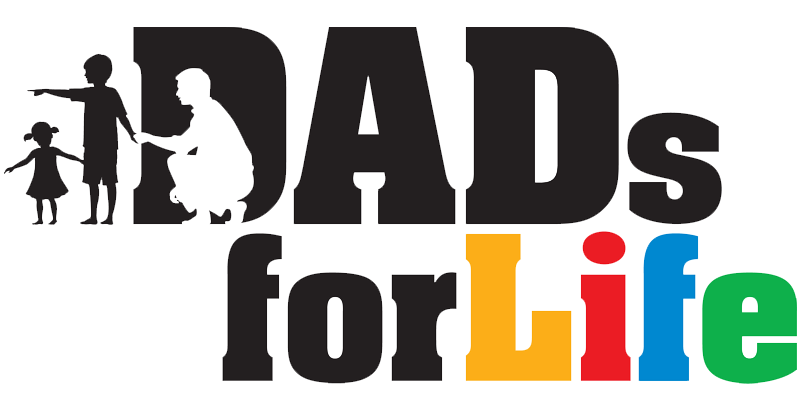Introduction
Many studies have linked father absence in non-intact families to juvenile delinquency. However, fewer have discussed the specific aspects of father involvement that reduce the risk of juvenile delinquency. This provides a review of the literature discussing the link between fatherhood and delinquency in adolescents, with a focus on what fathers can do for more positive adolescent outcomes.
When and Why Fathers Matter
Research emphasises the positive impact of the following aspects of fatherhood on reducing outcomes related to juvenile delinquency.
Parenting style
An authoritative parent is strict but also supportive, exercising appropriate control and limits while allowing autonomy; taking responsibility for limit setting and discipline; and monitoring children’s activities.
Authoritative fathering, in contrast to other parenting styles such as authoritarian (strict and not very supportive), uninvolved (permissive and not very supportive), and permissive (permissive and very supportive), is linked to less substance abuse, truancy, stealing, and drinking among adolescents in intact families.
The quality of father-child relationships
Youth who abstain from substances, compared to those who do not, typically feel closer to their fathers, spend more time with them discussing personal problems, and depend upon them for advice and guidance. Such fathers also provide more praise and encouragement to their children.
Teenagers who feel closer to their fathers are less likely to engage in delinquent behaviour and to display symptoms such as acting out, disruptive behaviour, depression, sadness and lying.
Interaction between parenting style and father-child relationship
In fact, research suggests that the father’s parenting style and the quality of the father-child relationship interact with each other to influence the risk of delinquency in adolescents.
For example, one study found that authoritarian parenting on its own is related to more risky adolescent behaviour, but when combined with a more positive father-child relationship, has a smaller effect on adolescent risk behaviours.
Likewise, the risk of marijuana use among adolescents whose peers use drugs is reduced by both closeness to fathers and the perception that parents would catch them for major rule violations.
Degree of father involvement
Greater father involvement with a 10th grader was associated with less problem behaviour (drug use, delinquency, violent behaviour) in the youth the next year, especially if the father provided support in school-related activities.
Among poor families with stable marriages, high father engagement predicted lower incidence of delinquency during the early adult years for both genders.
Among poor, intact families, father engagement at age seven reduced the risk of being in trouble with the police for teen boys.
For adolescents already engaging in rather high rates of delinquency, higher rates of father involvement had a protective effect against criminality one to two years later.
Even among non-resident biological fathers in a low-income minority community, active father involvement had a significant effect on altering the criminal behaviour trajectory of adolescents with high initial levels of delinquency. This effect remained after controlling for the presence of a father figure in the household.
Father’s co-residency with the child
Children who grow up in intact families or those with a resident father and mother do appear to enjoy an advantage.
One study found that only 13% of sixth through 12th graders living with both their parents had ever been suspended or expelled, compared to 23% in stepfamilies and 27% in mother-only families.
Among poor families, teen girls whose family structure was intact at the point when they were seven years of age were less likely to get into trouble with the police.
Some Evidence that Adolescent’s Gender Makes a Difference
Some studies have found the influence of fathers on adolescent outcomes differs for male and female adolescents. One study that examined the link between the father-child relationship and the risk of substance use and delinquency found that positive relationships reduce the risks for both male and female adolescents. However, this effect was stronger for male than for female adolescents.
Implications for Practice
The evidence presented above attempts to move discussions away from a narrow focus on father absence in non-intact families, to a broader consideration of how fathers, even if non-resident, can reduce the risk of delinquency among adolescents. Ultimately, it is how fathers get involved and the type of relationships they have with their children that make the most difference.
Likewise, programmes that support parents in preventing problem behaviour in adolescents are well-established and tend to focus on several strategies – from discouraging aggression and providing positive consequences to encourage desirable behaviour, to limiting opportunities for misbehaviour and providing clear, immediate, mild negative consequences to reduce problem behaviours. These guidelines apply equally to mothers and fathers. The gap and critical need, remains in getting fathers to complement mothers in both parenting programmes and at home.
References:
1. Harris, K. M., Furstenberg, F. F., & Marmer, J. K. (1998). Paternal involvement with adolescents in intact families: The influence of fathers over the life course. Demography, 35 (2), 201-216
2. Coombs, R. H., & Landsverk, J. (1988). Parenting styles and substance use during childhood and adolescence. Journal of Marriage and the Family, 50, 473-482
3. Barnes, G. M. (1984). Adolescent alcohol abuse and other problem behaviours: Their relationships and common parental influences. Journal of Youth and Adolescence, 13, 329-348.
4. Harris, K. M., Furstenberg, F. F., & Marmer, J. K. (1998)
5. Coombs, R. H., & Landsverk, J. (1988)
6. Harris, K. M., & Morgan, S. P. (1991). Fathers, sons, and daughters: Differential paternal involvement in parenting. Journal of Marriage and the Family, 53, 531-544
7. Flouri, E., & Buchanan, A. (2002). Life satisfaction in teenage boys: The moderating role of father involvement and bullying. Aggressive Behavior, 28,126-133; Mosley, J., & Thompson, E. (1995). Fathering behavior and child outcomes: The role of race and poverty. In W. Marsiglio (Ed.), Fatherhood: Contemporary theory, research, and social policy (pp. 148-165). Thousand Oaks, CA: Sage
8. Bronte-Tinkew, J., Moore, K., & Carrano, J. (2006). The father-child relationship, parenting styles, and adolescent risk behaviors in intact families. Journal of Family Issues, 27, 850-881doi:10.1177/0192513X05285296
9. Dorius, C. J., Bahr, S. J., Hoffmann, J. P., & Harmon, E. L. (2004). Parenting practices as moderators of the relationship between peers and adolescent marijuana use. Journal of Marriage and Family, 66, 163-178.
10. Zimmerman, M. A., Salem, D. A., & Notaro, P. C. (2000). Make room for daddy II: The positive effects of fathers’ role in adolescent development. In R. D. Taylor & M. C. Wang, et al. (Eds.), Resilience across Contexts: Family, Work, Culture, and Community. Mahwah, NJ: Lawrence Erlbaum Associates, Inc.
11. Harris, K. M., Furstenberg, F. F., & Marmer, J. K. (1998)
12. Flouri, E., & Buchanan, A. (2002)
13. Coley, R.L., & Medeiros, B.L. (2007). Reciprocal longitudinal relations between nonresident father involvement and adolescent delinquency. Child Development, 78, 132-147
14. Coley, R.L., & Medeiros, B.L. (2007)
15. Nord, C., & West, J. (2001). Fathers’ and mothers’ involvement in their children’s schools by family type and resident status [On-line]. Available: http://aspe.hhs.gov/search/fatherhood/htdocs/pdf/nces-2001032.pdf
16. Flouri, E., & Buchanan, A. (2002)
17. Bronte-Tinkew, J., Moore, K., & Carrano, J. (2006)
18. Foster, S., Brennan, P., Biglan, A., Wang, L., & al-Ghaith, S. Preventing behaviour problems: what works. The International Academy of Education. http://www.iaoed.org/files/prac08e.pdf
About the Author: The Dads for Life Resource Team comprises local content writers and experts, including psychologists, counsellors, educators and social service professionals, dedicated to developing useful resources for dads.
First published on 08-11-2011.
